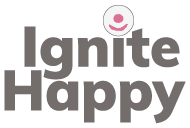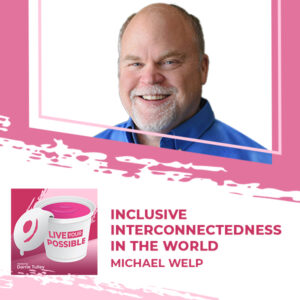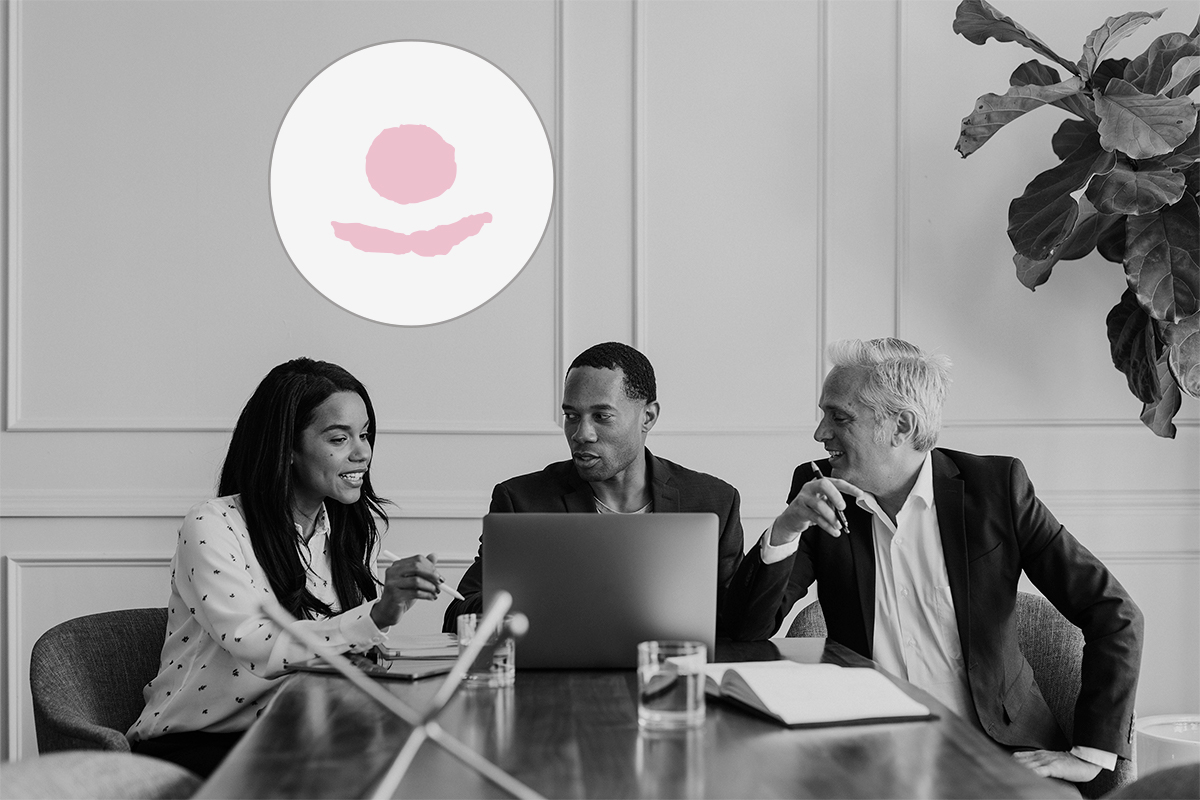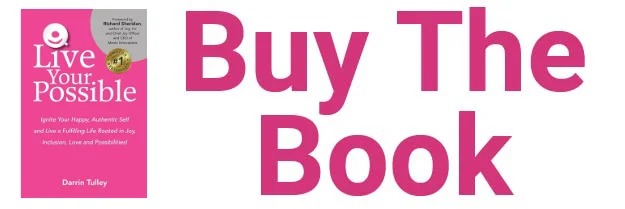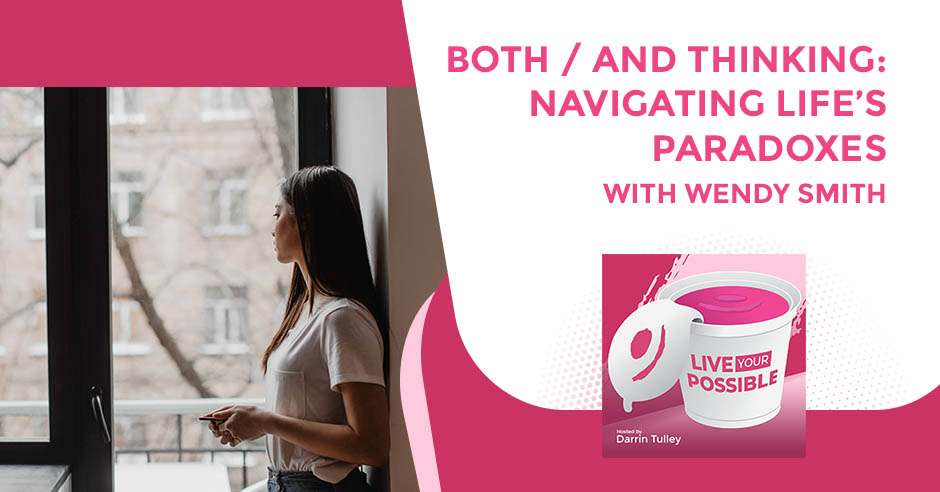
Life is full of paradoxes that, oftentimes, we are forced to let go of one thing for another. But why can’t we have both? Is it possible to just choose both? This episode’s guest has utilized the both/and thinking to help us navigate the paradoxes that fill our lives, especially in our careers. Darrin Tulley is with Wendy Smith, the Dana J. Johnson Professor of Management, faculty director of the Women’s Leadership Initiative at the Lerner College of Business and Economics, University of Delaware and fellow at The Academy of Management. With her book, Both / And Thinking, Wendy is transforming the tensions in our lives into opportunities for creativity, innovation, and personal growth. Tune in to learn more about diversity, engaging both/and thinking as a leader, and understanding contradictions between today and tomorrow!
—
Watch the episode here
Listen to the podcast here
Both / And Thinking: Navigating Life’s Paradoxes With Wendy Smith
Read our episode as we speak with Wendy K. Smith about Both/And Thinking and how to transform tensions in our lives into opportunities for creativity, innovation, and personal growth. Wendy is a professor of management, the Women’s Leadership Initiative Faculty Director at the Lerner College of Business and Economics at the University of Delaware, and a fellow at the Academy of Management.
She earned her PhD in Organizational Behavior at Harvard Business School, where she began intensive research on strategic paradoxes to help leaders and senior teams effectively respond to contradictory yet interdependent demands. Working with executives and scholars globally, she received the Web of Science Highly Cited Research Award four years in a row for being among the 1% most-sided researchers in her field and received the decade award from the Academy of Management Review for the most cited paper in the past ten years.
Wendy has taught at the University of Delaware, Harvard University, and the University of Pennsylvania at Warden by helping senior leaders and middle managers all over the world address issues of interpersonal dynamics, team performance, organizational change, and innovation. Her book, Both/And Thinking, was published by Harvard Business Review and was number one in the new release category on Amazon. She and her co-author, Marianne Lewis, were also awarded the Thinkers50 Breakthrough Idea Award for their work. Enjoy the show.

Wendy Smith, welcome to the show. It’s so exciting to see you. How are you?
I’m great. Thanks for having me here, Darrin.
I can’t wait to dive into everything you’re doing. In fact, congratulations on being nominated as part of the Thinkers50. They are rewarding folks that are changing how we think with management thinking in theory. Tell us about that. What is going on there?
Thanks for raising that. Thinkers50 is an amazing organization that brings together management thinkers around the world. They like to call themselves the Academy Awards of Management Thinkers. It was a huge honor not only to be nominated but to win this breakthrough thinking award because what an incredible group of nominees who are doing amazing things around the world. I am so grateful to be in a conversation and network of people who are thinking about making a difference.
Congratulations. That’s fantastic. I imagine it has something to do with your book and all the thinking that you’re putting out in the world. What is that? Could you dive into that a little bit?
As I said in this fun acceptance speech I got to give at Thinkers50, my ten minutes of fame, we won this Breakthrough Thinking Award. This breakthrough idea that we’ve been playing around with myself and my co-author, colleague, and friend, Marianne Lewis, for many years in our research, is this idea of living into the both and which leans the idea of navigating paradoxes. As I said in this speech, “This idea of paradox has been around for 2,500 years.” What is a breakthrough, if anything is that we are finally within the world of organizations, leadership, social science, groups, and teens, recognizing how paradoxical those spaces are and how we have to navigate them both and away.
When did you get started? How did you get started and get interested in this work?
In some ways, we can talk about how we can track back this idea to so many strands in my youth. Intellectually, this started for me in my PhD. I was doing a PhD at Harvard Business School around innovation on how companies and leaders in companies think about navigating, introducing, exploring, experimenting, trying new things, and innovating for tomorrow while simultaneously managing their existing world nowadays.
So much of the thinking and Innovation was that they had to rip the band-aid and move forward quickly, otherwise, they would get stuck in the inertia of now. When I went out to explore this, I was studying the top management teams of strategic business units at IBM. That’s not their reality. The reality was that they had to move quickly, experiment, not get stuck in the inertia of now, and they also had to manage their customers and existing products for quite some time. They weren’t letting go of it. The real question was how they navigate both the now and the tomorrow simultaneously. Also, the stability and the change. That introduced to me this concept of them navigating paradox.
How do they do that?
Some of them not well. The first question is, why is it so hard? Why is this such a hard space? Also, what do we mean by paradox? Let me say one thing about what we mean and why it’s so hard. What we mean by this word paradox is that it is underlying the kinds of challenges they face. What’s so hard is that the day and the tomorrow are competitive. They’re in competition. They’re in conflict over things like resources. Who gets the engineers? How do we allocate our money? How do we structure our senior team? Do we make our roles aligned with the innovation and the existing product, or do we have functions that are responsible for both? How do we allocate our time? That’s this ongoing conflict. What we find and point to is that these dilemmas show up for us, wanting us to make a decision.
People feel anxious when there is uncertainty. It feels like we’re out of control. It feels like we don’t know what’s going on. We work to make that decision as quickly as possible then we get stuck in the decisions that we make. We might work to say, “We’re going to move to the future, and I’m going to avoid, prevent, and limit my focus on the past,” or, “I’m stuck in the past, and I can’t even make time for the future.”
What we find or what we argue is that underlying all of those dilemmas that we face are these paradoxes. When we say paradox, what we’re talking about are these opposing forces, these tug of wars and competing demands that are not only in conflict with each other. It is not only contradictory. They are also interdependent. They inform and define each other. We see that in the world of today and tomorrow.
Today creates the resources that enable us to move to tomorrow. The tomorrow creates the energy that allows us that when today becomes tomorrow, we’re still resolved and energized. They’re reinforcing. We like to use the image of the yin and yang, the image of it’s the black and white slivers that are both oppositional but also define, inform, and interface with one another in this mutually reinforcing way. If we can see, notice, and appreciate these paradoxes, not see it as a bad thing but see it as the way the world is that underlies all of our dilemmas, it changes the way that we can think about and respond to an approach to that dilemma itself.
I appreciate you outlining that and sharing with our audience what that looks like. I feel like there is that sense of either/or type of mentality we get stuck in, which seems like this is going to counter that. Why is that such a negative element to the either/or that we’re thinking about? How do we start to move forward with the both/and? You set up that the paradoxes are quite important for us to move forward.
The first step is noticing how often we experience our worlds, tensions in our world, and the dilemmas. The way we experience it is in either/or. That’s the first step. The book where we’ve captured so many of the ideas is called both/and thinking. If I were to rename this book, I would rename it to be it’s not an either/or. I’m so thrilled to hear that come up more often. That’s the starting point. It’s noticing how often the tensions that we face in our lives feel detrimental and feel like an either/or that we have to choose between. That could be so many things. When I do workshops on this in companies and ask them to tell me about a big tension they feel with their company, the number one that comes up is not the attention within the company but the tension between work and life.
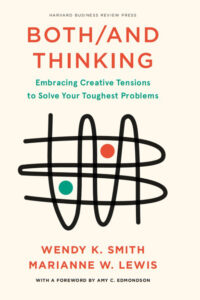
The tension between being in our careers and everything we want to do with the rest of our lives. That sometimes feels like an either/or because we have to make a choice between, “Am I spending my time right now doing my work or am I spending my time now with my family at the soccer game, at the dinner, my hobbies, or whatever?” It feels like an either/or. We can talk about so many. I know that a key piece that you think a lot about is issues of diversity. Those feel like a big either/or because it feels like it’s a zero-sum game that if we invite in more expansive voices and more expansive people backgrounds and diverse backgrounds into the conversation, it feels like we’re kicking people out. It’s not an either/or.
I’ll give you another one in the diversity space. I hear a lot of, “If we’re going to invite in broader conversations around diversity, you need to make change around that. Do we need to change the people and the way that they think, or do we need to change the system and the biases that are embedded in the system?” It’s not an either/or. If we can start by noticing the tensions that we experience and notice how often we frame them as either/or, we realize that’s detrimental. We can talk more if you want about why and the research about why the either/or is so detrimental, but if we can notice that and switch, then we have much more opportunity.
It’s almost like, conveniently, we figure out, “We got to pick a side. We have to go this route or that route. This is going to be easier,” to your point, we had to get to a quick response or quick answer. You talk about being a good teammate at work, yet I want to have success individually. I want to grow. There’s that contradiction as well. It would be helpful for us to talk about a little bit more about the either/or, as you mentioned.
In the book, we talk about the either/or being limited at best and detrimental at worst. Limited that it minimizes the possibilities of creative outcomes, detrimental being that it’s problematic. We say that it’s because of this either/or, our psychology, or sociology. It leads to these downward trending vicious cycles. We point to three patterns of that, and so here’s the three patterns very quickly.
The first is that we pick a side, and with some of your work, we get stuck. We call that the rabbit hole. In part, we pick a side because we feel this anxiety where there’s uncertainty. We want clarity, so we pick a side. I like to say that if people don’t believe that we want to quickly go to a decision, if we mentally bring ourselves back to March 2020 at the beginning of the pandemic, when there was so much uncertainty, and that uncertainty was consequential, we wanted clear answers to things that there were not clear answers for, everything from, “Should I be washing my vegetables 3 times or 4 times? Should I be holding off my mitt?”
We wanted that clarity because the outcomes were uncertain, and it felt so anxiety-provoking. We pick a side. There’s so much psychology that shows us how, cognitively, we want to stay committed to that side. We want consistency, and then we surround ourselves with people who reinforce our side. We call that the rabbit hole because we intensify one side. The second pattern is that once we pick a side, and when things change around us, we need to change.
We essentially shift completely. We over-correct to the other side. We call that the wrecking ball. We see companies doing this. We’ve gone down aside. We’ve stuck with a way of being, “We need to innovate. We’re going to change everything. We’re a very team-oriented culture. Everybody’s going to work in teams.” We’re all working in teams. No one’s getting individual work done, “We’re going to shift to individual work.” We overcorrect. You call it the wrecking ball because you can imagine this swing from one side to the other. That’s number two.
The third reason this is pernicious, and you were alluding to this earlier, is that the biggest problem with either/or, and we see this now in our incredibly polarized world, is that we pick a side, then we fail to value or appreciate that there’s another side that’s also legitimate. We get stuck, and we surround ourselves with the people, the structures, and the point of view to defend our side because we believe that one side has to be right and the other side has to be wrong.
The biggest problem with either/or-ing is that we pick a side and then fail to value or experience or appreciate that there's another side that's also legitimate. Share on XWe call that trench warfare because the image is that we dig a trench, reinforcing our side with the people who support us, and we shoot out at the other side, often dehumanizing them. I say this with a lot of anxiety and heartache. We do that because as soon as we’re triggered by fear and anxiety, and there’s so much of that, we have to double down on being right about something because that makes it feel as opposed to opening up the vulnerability on the possibility that we don’t know or there’s complexity.
That complexity is hard for us to grasp when our brains go into that fear mode. It is this highly polarized experience. I say this with a lot of anxiety because we see that in our world now. We see that in our organizations, where we pick a side, and there’s someone else pick a side. We’re in that constant, combative state. We see that in our partnerships and in our national politics, where things don’t move forward because we are so sure that we are right and “they” are wrong.
We’re seeing that in our global politics now. A lot of people are dying because there are multiple sides of conflict where both sides have legitimate painful claims, but each side believes that they are the only ones with legitimacy and those painful claims. It’s a heartache to see that. I’ve been spending a lot of time talking to people about that, and it’s hard. It’s hard for people to live with the complexity that there could be multiple sides with legitimacy in these kinds of geopolitics.
It’s scary to think about the far-reaching impacts that you mentioned with warfare, senseless acts of killing, and people defending their position even in the workplace. My heart goes out to everybody who’s feeling this directly with loss, even the loss of possibilities, wherever that might be, in forms of life, opportunities, or being seen as someone who’s capable of doing certain things. Let us go to a personal level for a minute, Wendy.
We can go to the personal level. The key here is that this both/and helps us with our individual decisions, but it also has a huge impact on our global outlook. It’s both.
What I mean by personal level is what you’re saying resonated with me because I went through this big awakening years ago. The logo of the show and on my book, this one-eyed smile, is different. Years ago, I noticed that I was swimming in that bubble. That one little circle was a bubble of sameness. Part of the story is when I started to realize that it wasn’t my fault. We’ve been pushing away each other, pushing away possibilities and the biases that I had, but it was my responsibility.
It was that paradox I needed to recognize. It wasn’t my fault, yet I needed to recognize that I was hurting people based on who I was and the position I was in. I needed to expand. That smile is me expanding out to the world. I got out of my bubble of sameness, and I invited the world in differently. I welcomed indifferences. That’s that other paradox that woke me up to say, “We can coexist, and there are better opportunities when we bring differences. It creates new discoveries and my best successes.”
The most success I’ve had with different organizations is when we’ve welcomed people with different backgrounds, skills, and experiences. I was hiring people that were like me. It wasn’t bad. When I started to hire differently and make a different path, I started to see the possibilities. I started to see the joy, which is why this show exists. This is why that one-eyed smile exists because I had to get out of my bubble of sameness. When I started to do that, the expansion was me inviting the world in. I got so much joy out of it. What you’re saying personally resonates with me, and I didn’t realize I was living in this world of paradox in both/and until we started talking.
I teach a women’s leadership course through the university. One of the things that was poignant to me is we speak a lot about diversity. What strikes me is that one of the reasons it’s hard for people to, as you say, invite in difference is because it feels threatening to our own identities. I love the story of a woman who came to us and said, “I did not know how to interact with people different than me. I was scared, and I thought I would lose a sense of self. I thought I would lose my identity.”
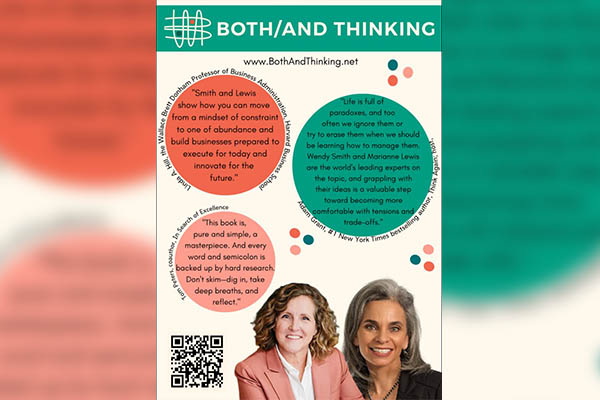
This was a woman of color who was so proud of being a woman of color legitimately but was afraid to interact with people. It didn’t resonate in part because what if that meant that she lost who she was and what she identified with? Yet, she talked about how being in conversation, developing strong ties, making friends, and developing trust with people who were different than her with men, with White people, and with people that were not from the United States because this is a woman from the United States
Also, how those differences enabled her to delve even deeper into who she was. The ironic effect, and this is what we see with paradox, is that engaging with the opposite shines a light on and enables the one pull by engaging with the other. By engaging with difference, we can value what’s unique and distinct about us rather than lose that sense of it.
I have chills because that’s exactly how I felt. I recognized that I wasn’t being my authentic self. I was pushing away my uniqueness because I felt like I needed to fit into this club based on what I looked like or the jobs I had. When I shook that, I recognized I was different. I even use a pink pen to be different to recognize this every day. That’s my accountability reminder. I appreciate what you’re saying. I was afraid when I was going to give up, then when I did give it up, I got a lot more. Is that okay when you think about both/and? Some folks will challenge me on that to say, “If we give more to the world, I’m not expecting things back. It just happens.”
Isn’t that an amazing place where we can let go of expectations, and the things that we want come to us even more. That’s a leap of faith. We don’t use the language of a leap of faith, but we do use the language of serendipity and possibility emerging over time that we don’t even expect. I’m a big fan of Christian Busch’s work The Serendipity Mindset. It is the ways in which we create the structures in our lives and create the conditions to enable possibility to emerge that we don’t know, the serendipity as he talks about, the luck comes to us, and there it is.
It’s interesting when you talk about luck. You’ve probably seen the studies around creativity as well. Folks might say things happen to certain people for certain reasons, or, “They’re so creative and I am not.” A lot of people think they’re not creative. In fact, studies will prove that only 2% of adults have the ability to be creative, which is super scary. I don’t know if you’ve seen that study. It’s pretty wild.
Amy Edmondson says this in your book, which I love. She talks about the work you’re doing. It’s a wellspring of creativity and possibility. I’d love for you to dive into that a little bit more, too, because I think creativity is what’s lacking and that ability to see what is there or could be there. I look at this as well as having faith. Maybe it’s a belief. Trust will get us to this place that you’re talking about. If you pursue this with a higher purpose and a higher meeting, we will get there.
There’s a great book that we love by psychologist Albert Rothenberg. It’s called The Emerging Goddess. He talks about Janusian Thinking, the Roman god, Janus, that’s two-headed. What he did was he went back to looking at the diaries, letters, and correspondence, just threads of insight from geniuses, people like Einstein, Mozart, and Virginia Woolf as the writer and said, “What had enabled that genius, that novel ideas?”
What he finds is that these genius ideas emerge when these people were able to juxtapose. They are posing ideas, sit with it, and enable it to bubble up into something new. For Einstein, the Theory of Relativity comes from asking the question, “How is it that an object can be both in motion and at rest at the same time?” Picasso’s art is about the integration of the dark and the light. Virginia Woolf’s writing is about understanding the juxtaposition of life against death. That’s an interesting juxtaposition. I was listening to a show reminding us so we know that some of the people that are most grateful for what we have offered to us in life are the ones that are confronting their death.
What’s that juxtaposition there that enables that? Rothenburg explores that one possibility that emerges when we juxtapose opposing ideas and invite ourselves into the question of how they can coexist. How can they simultaneously occur? Is this creative? We call that creative integration. We use the image of the mule because the mule is the oldest living hybrid that we’ve been breeding for 3,000 years. It is smarter than the horse and faster than the donkey. Bring them together, and you’ve got the mule. That is one approach or one outcome of both/and. It’s not the only one, but it’s one.
How did you come up with that related to the mule? What type of a-ha or moment occurred?
For us, this idea that both/and can lead to this creative integration, that’s been an emergence. Rothenburg wrote this book years ago about this Janusian Thinking. That a-ha has been a fantastic insight. Our colleague, Ella Miron-Spektor, in INSEAD has been doing a ton of work on creativity. What she finds is just changing the questions that people ask and moving them away from asking questions that are either/or questions and into the both/and surfaces much more creative outcomes than people who frame their questions as either/or. There’s a whole lot of research that supports this idea. The bigger a-ha for us was that I went into research thinking that “If you framed to both/and, you’d come up with this creative integration.” Sometimes we do, and more often we don’t.
When I went into IBM, I was like, “The people that you asked this question, how do they do it well?” The teams and leaders that do this both/and between today and tomorrow should be coming up with all these creative ideas of how to bring together their innovation with their existing product, and there it is. That happened sometimes, but more often, it didn’t happen. Instead, what we found is the metaphor we use that we label as being consistently inconsistent or the metaphor of a tightrope walker. What we mean by that is that what we found at IBM is that in order to live into both/and over time, and that’s the key point, they are making decisions. Those decisions are sometimes support the existing products. They’re putting more resources into the existing product.
They’re making other decisions where they’re putting more resources into the innovation, but they are making these micro shifts and micro-oscillations between supporting both of these over time. They’re not over-deciding to focus on the existing product that they get stuck in the inertia. They’re not over-deciding to focus on the innovation that they lose any sense of their existing world and their current customers.
They’re making these micro shifts. We use this metaphor of the tightrope walker because, essentially, the tightrope walker isn’t standing still. They’re not waffling in the both/ands. They’re not falling off the tightrope by focusing too much on one side or the other. To get to the other side, to focus on the long-term vision over time, they’re making these micro oscillations on the tightrope. They’re never balanced. They’re not stuck in a balance. They’re balancing, micro-shifting over time.
I almost see them holding this long pole as you’re describing it as if they’re holding the business in their hand yet move forward as you’re describing it. How do you engage a leader to go through these small steps? How do you engage both/and thinking?
There are a couple of different ways to answer that. The first is the leader sees the tensions that they’re experiencing. One thing that I have found over the years is, increasingly, leaders are A) Experiencing tensions and B) Recognizing that they have to move beyond their either/or. When I started this work in my doctoral work, so many people told me, “Don’t go there. Paradox is not a concept for organizations and leaders, and those real people out there won’t get it,” because that’s what academics call leaders and people that do the work that we study.
In the last years, the language has shifted significantly. We have colleagues at Oxford University, Michael Smith, Tim Morris, and others who linked up with or worked with the search firm Heidrick & Struggles. They came up with something fun. What they did was that they interviewed 170 CEOs around the world and asked, “What are the challenges that you are facing now?” They came up with something that’s called The CEO Report. You can download The CEO Report by looking at the Oxford website.
The key a-ha from this was that leaders are facing more complex tensions, and they are understanding or framing them in the language of paradoxes that they cannot make a decision between today and tomorrow, being global and being local, or focusing on the markets, profits, and business and addressing issues of sustainability and the broader mission. We’re focusing on their outcomes, customers, and their employees. It’s not a decision between the two. They have to live into both of them. The a-ha of the CEO report is that leaders get that challenge more now and are using this language of, “We need to live into the both/and. How do we do it?”
I’ve seen some leaders get creative about how they go about balancing sustainability, balancing their people, maintaining profits to be able to exist for the long term, continue to innovate, and reinvest for the longevity of not only the business but also the services they’re providing. It’s so important. I’m glad to hear that.
Also, your work increasingly recognizing that if we’re going to be effective for our customers, the first thing we have to do is support our employees. Happier, engaged, and productive employees who feel like they belong are the ones who are going to go out and support the business and sell it to the customer compared to the ones that are there and told, “Make the customer happy at all cost.” We see that as well.
That’s a cause and effect, I believe. When we reinforce the people aspect of this, people who want to do things differently show up. Maybe employ some of the both/ands and step into these paradoxes. That’s where opportunities coexist for everybody, and people could take off. Was our mutual friend, Jane Dutton, influential in any of your thinking on your path.
I’ll give a huge shout-out to Jane Dutton, Professor of Management at the University of Michigan. Jane was and continues to be a huge mentor of mine in so many ways in Academia, as she is just with many people. Many people reading might know that Jane launched the Positive Organizational Scholarship Community. More importantly, she has been both a role model of what it means to be a compassionate and engaged scholar and an advisor to me on how to think about the value of research, how to engage with research, and engage in the community.
A scholar, scholarship, and academics can feel lonely and competitive. Jane, our mutual friend, has redefined scholarship as a communal integrative activity that is all about living into our vulnerabilities and connecting with people. I am so grateful to her on so many levels for the ways in which I have leaned into, sought her advice, and been the beneficiary of her wisdom and compassion.
You’re both incredible. You’re vulnerable to go into that level of research where, as you said, some folks might be saying, “That doesn’t exist,” or, “We don’t need that here.” When you think about positivity, the both/and thinking, or compassion in the workplace, quite honestly, it’s loving other human beings so we can bring out the best in different ways. I applaud you and Jane.
I want to pause for a second because I also want to give another shout-out. Jane started Positive Organizational Scholarship along with two other scholars who are also worthy of mentioning, Kim Cameron and Bob Quinn at the University of Michigan. Kim and Bob were some of the early scholars who wrote about this idea of paradox in organizational scholarship. We won this breakthrough award. If I am grateful for anything, it is standing on the shoulders of giants like Kim and Bob, whose competing values framework leans into competing ideas and values as a way of navigating culture.
Their work about leadership is about leaning into different and opposing leadership styles at the same time. They edited the volume Paradox and Transformation way back when. Marianne and I have leaned into an early conversation that they started and have built on and expanded it. We now have a global community of hundreds of scholars studying this idea of paradox that I was told is never going to go anywhere in the organization. It’s gone places, but Kim and Bob were also huge hugely influential, and I want to give them a shout-out, too.
I appreciate you doing that. They are quite amazing. They are hands-on. They’re like Jane, where they want to help anyone that is interested in this work that wants to put this into play at work or in the communities or the world with different leaders. I personally have met each of them at the Positive Business Conference. I can imagine you being an amazing speaker there as they were and sitting in their classrooms and have these subgroups of conversations with Jane, Kim, and Bob.
You’re right, they’re personable, yet they’re giants and leaders of their craft. I am overwhelmed with how much amazing research and execution is now out in the world with positive businesses that people are taking seriously by putting positivity in the workplace. I appreciate you mentioning them. They’re quite amazing.
I’m so grateful for you to say that because the scholars sometimes sit behind the ivory towers like, “What’s going to happen with this research?” It’s people like you who are engaged in this conversation that say, “This research is valuable. It’s interesting, and it’s valuable. It will make a difference. Let’s figure out how to take it and bring it into the workplace.” Thank you for doing that.
I appreciate that. When I was at MassMutual, that’s when I went out to the conference. I went out to meet Mindi Cox, who I want to introduce you to. They have a tagline, “To help people thrive at work.” It is what it says. I brought that back to MassMutual saying, “This is possible.” To your point about bringing it back to the workplace, getting leaders on board to walk the talk and to reinforce it, then to teach and to help others to step in in a safe environment to be able to then do the work and be courageous and vulnerable, that’s where change lights everybody up, and then results follow. Are we going to see outcomes and results? Absolutely. I’ve seen it in a lot of the research that I’ve done and the research you’ve done. Is there anything you could share related to that?
I was going to ask you the same. What’s you’re a-ha there?
I appreciate you asking. With MassMutual, at first, we weren’t sure it was going to change our culture. We thought it was going to be a flavor of the month, and then we had to dig in and commit to this. We went from a third quartile reading in our culture scores up to a top decile score within twelve months. We’re at it for a couple of years until we change course about our thinking and our approaches. This is after going to the positive business conference and learning from Jane directly and others.
We needed to step in differently. We need to care for people and have empathy. When we ask questions and ask for involvement, we have to be serious. We had to reinforce that we wanted to focus on coming up with ideas to implement different actions. Not only did our survey of culture scores improve. We doubled our financial results. We became number one in certain markets as far as financial wellness. Our net promoter scores were in the top quartile. It’s cause and effect again. People improve processes, deliveries, and experiences where customers are delighted. You have more financial outcomes as well.
It’s proven. There’s another quick example. I have a episode show where we talk to a hospital about their transformation where they shifted their focus from patient care to patient caregiving, meaning the folks that are taking care of the patients. They transformed all the numbers. They end up being a top decile hospital and patient safety. They ended up creating a whole new mantra around thriving in the workplace and people stepping in, having the answers, and leading the way. They’re transforming how hospitals are being run now. Their burnout rates are lower. Their nursing shortages are no longer there, all the things you can imagine that go with healthcare these days. I appreciate you asking.
It’s real. The work you’re doing with Jane and others is impactful. Thank you. I want to make sure you’re continuing to put that out to the world. You won the Thinkers50, so that’s well beyond me. Anybody that’s reading should gravitate. Grab your book. It is quite special, and I did notice that. There’s a guide you have on the website of some questions in some areas that you’ve talked about on the show that can reinforce the thinking. It’s straightforward. It could be implemented in any part of your day, especially in the workplace for the communities. There are areas where we could simply practice. How about you? What other results have you seen?
I’m so grateful for you to mention those results. One of the things that’s surprising to me is that we know we have these great examples. We have this incredible research where we find that there are some simple practices like how to enable people to be more inclusive, how to enable people to show up more fully, how to create voice, how to create psychological safety, and how to focus on our employees. People don’t do them.
They don’t do them. I did a dinner round table for a group of CFOs. We were talking about “What would it look like to lean into some of these kinds of practices?” Very quickly, because they’re CFOs, went to, “We got to do a risk assessment. We’ve got to be able to show the outcomes.” They were very clear. We have to show the outcomes and the short-term outcomes. We all know that none of that is that predictable, but we got to show it anyway. There is a way in which we have constructed our organizations with this short-term outcome, short-term rewards, and risk management. It functions back to our fears, anxieties, worries, and our collective worries that we build into our systems. At Thinkers50, I was thrilled to have some time to hang out with Andrew Winston.
Andrew is the co-author of Paul Polman’s book Net Positive. Paul Polman is the CEO or was the CEO of Unilever for several years, introducing the Unilever sustainable living plan with a focus on shifting or enabling financial performance through a commitment to sustainable practices and employee practices. Paul Polman was famous as a listed company for saying to investors, “I’m not going to offer up short-term quarterly reports anymore or quarterly earnings.”
“That structure reinforces our short-term thinking, anxiety, and fears. That’s not going to enable us to take risks to put aside our fears and try things that we know are valuable, but that take longer to marinate, and we cannot demonstrate immediately.” There’s something about our structures that reinforce that and about the courage of our CEOs, our leaders, and ourselves to have the faith to let go of that anxiety and live into something that we know works but we aren’t able to demonstrate on a spreadsheet in quite the way that people want to do so.
Our CEOs, leaders, and ourselves have to have the faith to let go of that anxiety and live into something that we know works. Share on XA good examples is stock companies, to your point, have those quarterly calls. They have to hit the numbers, or else something poor happens to the stock prices. You are right. There’s that element of long-term thinking, stepping into that belief differently about our people or what the priorities are. It is that balance of whatever is important to us now, like sustainability, diversity, and inclusion, helping people belong and feel like they’re seeing and valued.
When people feel valued, people step in differently, and they do amazing things. That’s something I personally had to overcome. When I recognize that anything is possible for people, people will surprise you in ways you can never imagine. That’s what woke me up. Some people will hear the word woke, and they’ll be like, “He said woke.” It’s okay. We have to stop and listen to the words that are stopping us from making progress, whatever that might be, and use both/and.
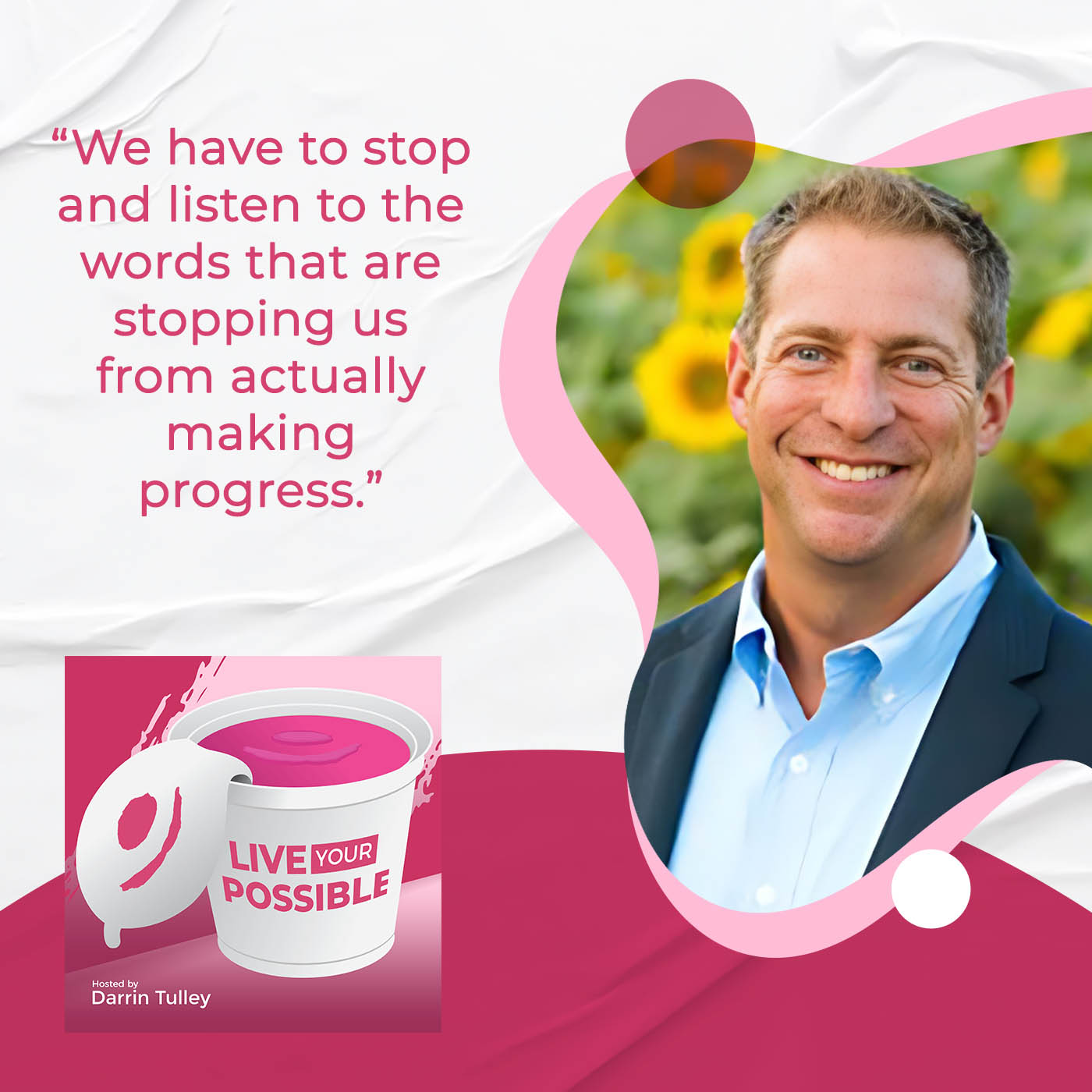
To your point about CFOs, when I talk about people first, I usually get, “What does that mean? This isn’t a playground.” It’s like, “No, back to your both/and. Focusing on people and getting tremendous business outcomes is possible, and I can show you how, and you could show people how.” It’s just stepping into that thinking. We go back to what we always think about, “People first doesn’t mean we’re giving away the store. Can I love someone in the workplace?” Yes, I love people. I love human beings. If we start to think about both our minds and our hearts together, people start to feel that. They feel that authenticity to what you mentioned before.
I have three kids, and two of them are at a school that was reading a book that the head of the school shared with me, and I loved it. Essentially, it was making this argument. One of the issues about performance at school is kids who perform feel like they belong. This is like their place, but in order to perform, we have to shift that relationship. It’s not that you need to perform in order to feel like you belong.
It's not that you need to perform in order to feel like you belong, but in order to perform and to succeed, you first need to belong. Share on XIn order to perform and succeed, you first need to belong. That is going to be what’s enabling our success, and the same is true in the workplace. In the workplace, you come from financial institutions like the superstars. It’s like, “This is my place,” and everybody else is like, “Am I the imposter?” The more that we can enable people to feel like this is their place, they belong, their voices are valued, and their contributions and talents are valued, the more that they will grow, contribute, and succeed. Let’s look at belonging, not as a woke thing. It’s something that enables that success rather than something that is a function that comes after or is responsive to that success.
Thanks for saying that. There are a lot of companies that have DEI& B at the end. This is a belief I have that the “B” for belonging should be first because as we welcome people into businesses, as you said, people feel part of the team. As an audience member, imagine someone coming in feeling on the outside for six months or a year or maybe the whole time and not being able to be their true self or full self. Are they going to perform to the best of their ability or do things that you thought might have been impossible in the past? No.
The belonging piece is spot on. If we could welcome people in a different way, then people would start to understand, “I can contribute to that level of psychological safety,” then I could get valued for who I am. It continues to morph into amazing possibilities for individuals, teams, and/or organizations. I appreciate you bringing that up.
Here’s the thought experiment that I do with my class around this for that point. When it comes to feeling included or like we belong, we all ask these questions as we enter into new institutions, “Do I belong here?” no matter who we are. It might be that there are different degrees of this depending on our social identities. I don’t want to diminish that. I invite my students or my executives to take a pause and say, “What did it feel like for you to enter into a new space? How did you feel about it? Were you sure?” Some people have a lot of swagger and confidence, but that is very few. For the most part, everybody has a story of looking around and saying, “Am I supposed to be here? Do I belong here?” It is that sense of Imposter syndrome.
The question is, “What did that feel like? What were the implications for how you could show up?” Most of the time, if we’re sitting there asking a question like, “Do I belong here? Am I supposed to be here?” we’re saying, “Should I say this? Should I do this? Should I act this way?” If we feel like, “This is my home. This is my place,” then it’s like, “I’m going to jump in, take action, and feel engaged,” then my actions change.
The key thought experiment is to realize that 1) We all walk into institutions and ask questions about our belonging. 2) The quicker we can create the conditions for each other where we enable ourselves to say, “This is all of our place we all belong,” the more that people are going to be able to bring their best selves, their whole selves, advance, and create great things.
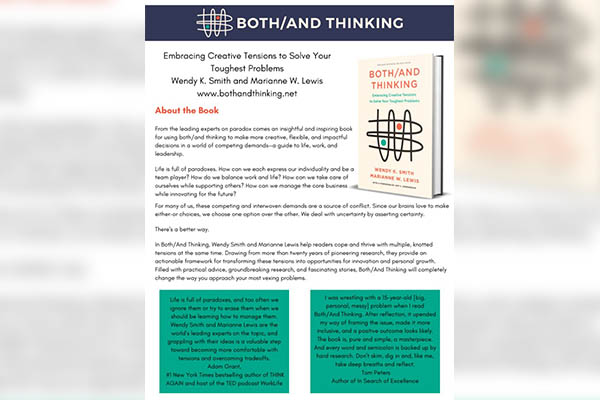
It’s so true. I also say that if we are comfortable with ourselves, then we could be ourselves. You’re not wasting time trying to be somebody else. You’re able to create based on where you come from.
That’s a little bit of a both/and between the work that we do internally to bring ourselves to a space and the work that happens in the space. People will ask, “Is that about who you are, or is that about the space you’re entering into?” It’s both. That is a both/and of both. It’s both who we are and the space because even the most confident people could walk into spaces that are precarious, nerve-wracking, high status, or competitive and feel off-kilter. Even the people that you look at like, “This person’s made it,” you ask them and they will tell you that there are spaces they walk into and don’t feel like they belong. It’s both who we are as individuals and it’s the space we create.
I need to ask because you mentioned this as well in the beginning about the both/ands and how you got to this place. You mentioned there are some lines back to your childhood. Is there anything that you recall that is showing up for you, lit a fire for you, or was a light that you go back to?
One of my advisors was Richard Hackman, who did some great work on groups and teams. He was the first to say a line that is used often, “Research is me-search.” We repeat that at the beginning of our book, and we say it. Certainly, it’s so much of leaning into this both/and was about so much of my own either/or. Whether it was either/or about my career or what did I want to be, I spent a lot of time thinking about “Do I want to be an academic?”
“Academics is about thinking about ideas. They don’t make an impact on the world, but then, if I go out into the real world and, am I going to be able to bring deep and important ideas? When I started studying in my PhD, do I want to be studying innovation? Is that as impactful? I want to be studying social responsibility, but am I going to be able to ever get job with that?” I spent a lot of time either/or-ing in my own life that has triggered an exploration until there is an alternative and what it could that look like.
If you go back to your fifth-grade self, did you have a dream of what you wanted to be? Were you either/or-ing back then going back and forth about different options? I think we typically might.
My fifth-grade self was too busy trying to figure out fifth grade. I don’t know what to do then. I spent a lot of time in high school in a youth group where I did a lot of leadership work. The value of leadership and how it can make a difference to bring people together and make stuff happen was something that I saw and experienced. The idea of whether to study these phenomena or to be this phenomenon certainly came up, but I spent a lot of time in high school engaged in and valuing what leadership means.
There’s value in leadership and how it can make a difference in bringing people together and making stuff happen. Share on XWe think about sparking possibilities for people who are reading and taking that forward to help others bring out their potential and their opportunities, and doing this without the fear of giving something up or self-preservation yet to do better for others. I believe everybody’s possible. There’s an element that if we could all lean in and help each other, we’re all going to get better. I’m curious. Is there something that I haven’t said or you want to reinforce that you could help our audience leave with to start to think about how they can not only live their possible but help others, too?
I’ll offer two quick thoughts. I want to say that this isn’t easy. Somebody said, “Isn’t the both/and the easy way out? It’s like the middle ground.” No, the both/and is leaning into and acknowledging that there are different and opposing points of view that we can live into the uncertainty and live into the vulnerability. We talk about the recognition of the discomfort. We don’t want to sweep that under the rug. We want to acknowledge it that we can get to not letting it define our actions. We talk about finding comfort in the discomfort. Also, the empathy that it’s not easy. It triggers our fears, our anxieties, and our defensiveness. That’s one.
The second is I’ll leave it on a more hopeful piece, which is that people say, “I get it. This both/and is valuable. What do I do?” We wrote a whole book about what to do. There’s a whole book of suggestions. The first step into it, we touched on this, but I’ll just emphasize. Notice how often we frame our challenges as either/or and change the question. Changing or reframing the question invites us into a new way of thinking or at least the starting point of a new way of thinking. If it seems complicated or complex, the first step, the first invitation, is to change the question.
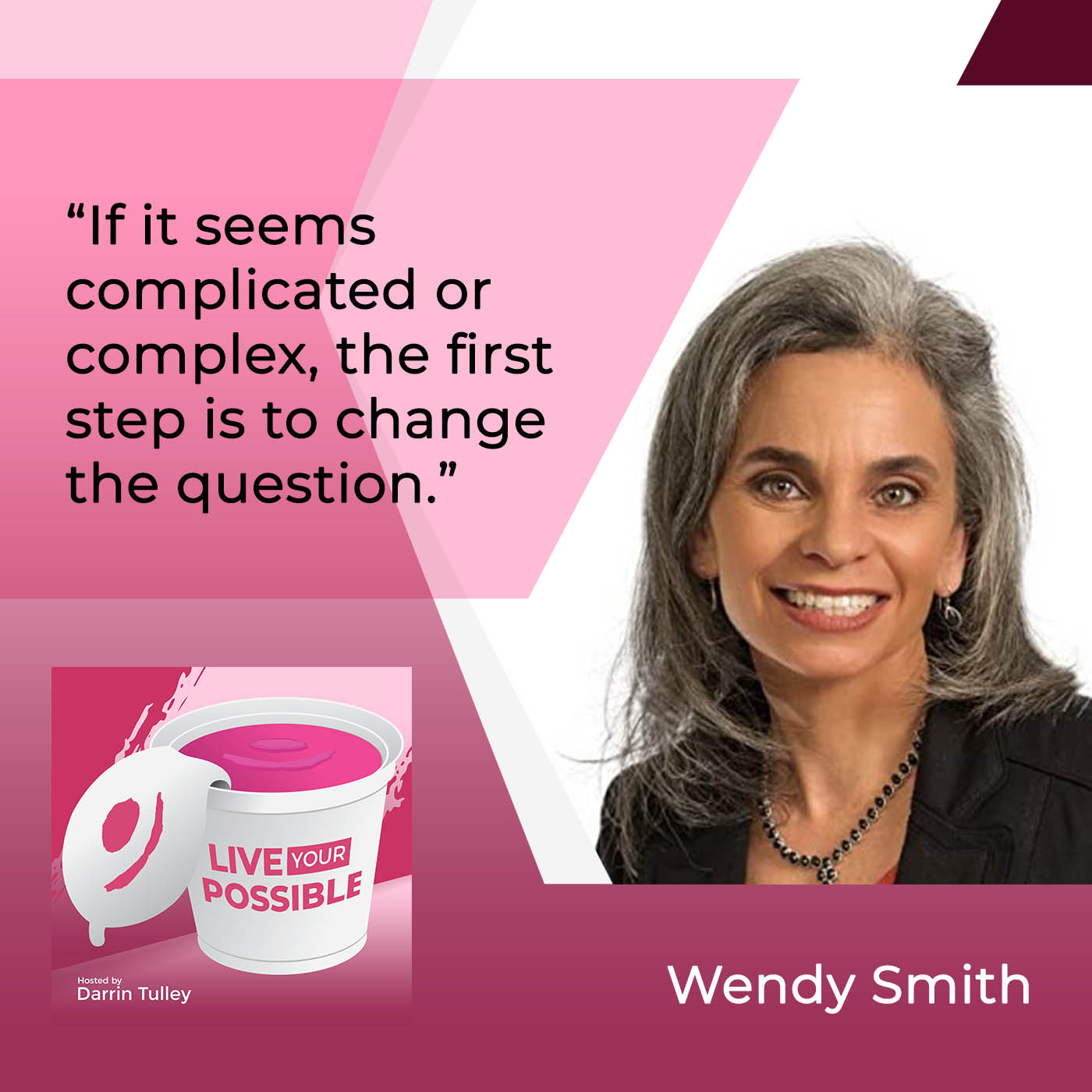
Wendy, you are making a huge impact in the world, your Both/And Thinking, how you’re presenting yourself, and your courageous ways. Congrats on the awards you’ve been given. You deserve everyone that you get and the ones ahead. I hope to see you on the road and possibly at a conference one day, maybe at the Positive Business Conference in 2024. That’d be pretty cool. I’m in awe of your work. Living in awe with wonderment is something that allows us to open our minds differently, and you’re doing that for me and, I hope, many of the folks who are reading. I’m grateful, and I’m honored that you’re on the show. Thanks for everything.
Thank you, Darrin, and for the work that you are doing to take these ideas and make them possible to live our possible.
Thank you.
—
I could sit in a coffee shop with Wendy all day to learn from her research, ideas, and our thinking. Her work is making far-reaching impacts and making vibrant realities possible worldwide. Ironically, Wendy’s breakthrough thinking has been around for over 2,500 years. However, leaders and humans around the world are calling for change, and her ideas are one of the answers to the call. Join me in taking on our channels to change the question from either/or to both/and our decisions and actions starting now.
We discussed the many benefits, including improving work conditions, creating more remarkable business outcomes, helping people belong and thrive, welcoming differences of opportunities to discover, and replacing fear of the unknown with faith in the possibilities. Take time to delve into Wendy’s teaching and practices with open-minded curiosity and wonder to inspire you and those you care for to reconnect with your happy, authentic selves and live your best possible.
Important Links
